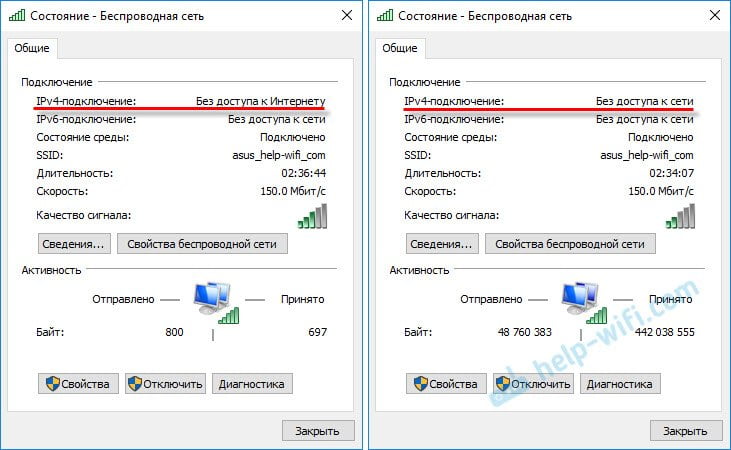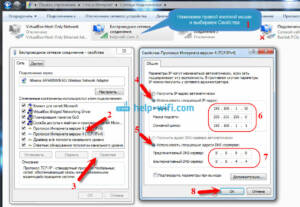There may be several reasons for the lack of Internet access when using ipv4. One of the main reasons is the exhaustion of ipv4 addresses. Currently, the number of devices using the Internet has increased significantly, and there are few ipv4 addresses left. This leads to the fact that providers are forced to use NAT (Network Address Translation) mechanisms, which allow the use of one common address for several devices. However, this may lead to problems connecting to some sites and services. In addition, problems with accessing the Internet may occur due to network configuration errors or firewall settings. Some programs and applications can also block Internet access. To solve the problem with Internet access when using ipv4, you can switch to ipv6. This protocol provides a large number of addresses, which allows devices to connect to the Internet without using NAT. However, not all providers support ipv6, and not all devices can work with this protocol. You can also check your firewall settings and programs that may block Internet access, as well as check your network settings. If the problem cannot be solved, you can contact your provider for help.
How to check if the problem is with ipv4
The Internet connection can be interrupted for many reasons, one of them is the use of ipv4. If you are facing network connection problems, you need to make sure that it is ipv4 that is causing the problem.
There are several ways to check:
1. Ping the server
Open a command prompt and enter the command 'ping google.
com' (without quotes). If the server is not responding, the problem may be related to ipv4.
2. Change DNS server
Use a different DNS server, such as Google Public DNS. To do this, open Control Panel, select 'Network and Internet', then 'Network and Sharing Center', select your Internet connection and click 'Properties'. Select 'Internet Protocol Version 4 (TCP/IPv4)' and click the 'Properties' button. In the 'Preferred DNS Server' section, enter '8.
8.
8.
8′, and in the 'Alternative DNS server' section - '8.
8.
4.
4'. Click 'OK' to save the changes.
3. Update your network card drivers
If you are using outdated network card drivers, the problem may be related to them. Update drivers using Device Manager.
If none of these methods help, contact a specialist to help solve your Internet access problem.
What solutions can help restore access to the Internet?
If you encounter problems accessing the Internet when using ipv4, do not despair. There are several solutions that can help restore connectivity to the network.
1. Check your network adapter settings.
In some cases, the problem may be due to incorrect network adapter settings. Check your settings and make sure they match your network.
2. Reboot your router.
Rebooting your router may help restore internet connectivity. Simply turn off your router for a few minutes and then turn it back on.
3. Use ipv6.
If you have the option to use ipv6, try switching to it. Some providers provide access to both versions of the protocol, and switching to ipv6 may help solve the problem.
4. Contact your provider.
If all else fails, contact your Internet service provider. They can provide further assistance and resolve the issue.
Don't let your Internet connection problem prevent you from working and communicating online. Follow these solutions and you will be able to restore your internet connection.
When the problem of accessing the Internet using IPv4 becomes complicated, you can turn to other protocols. One of them is IPv6, which allows you to expand the address space and provide a faster and more secure connection to the network. In addition, many Internet providers are already switching to IPv6, which makes its use increasingly relevant. Another option is to use a proxy server, which can help bypass provider restrictions or regional blocks. In addition, you can try using VPN services that encrypt data and provide anonymity on the network. But before using any of these methods, you must make sure that they do not violate the laws and rules of the Internet provider.
How ipv6 and DNS64/NAT64 protocols work
IPv6 is a new version of the Internet protocol that is used to address and route data packets on a network. Unlike IPv4, which uses 32-bit addresses, IPv6 uses 128-bit addresses, which allows you to address a larger number of devices on the network.
However, not all devices and networks support IPv6, which can lead to problems with Internet access. To solve this problem, you can use DNS64/NAT64 protocols.
DNS64/NAT64 are technologies that allow non-IPv6 devices on the network to work with IPv6 sites. DNS64 translates IPv4 client requests to IPv6 addresses, and NAT64 allows IPv6 sites to access IPv4 devices.
So, if you are facing internet access problem due to lack of IPv6 support, you can use DNS64/NAT64 to solve this problem.
How to configure your router to use other protocols
If you are faced with a problem accessing the Internet when using ipv4, then one solution may be to configure the router to use other protocols. In this article we will tell you how to do this.
1. Determine the list of available protocols
Before you start setting up your router, you need to determine what protocols are available from your Internet provider. To do this, you can contact the provider’s technical support or check the information on its website.
2. Go to your router settings
To access the router settings, enter its IP address into the address bar of your browser. Usually the router's address is indicated on its back panel. Enter your username and password to access the settings.
3. Change the protocol
Find the protocol settings section and select the desired option from the list of available ones. Save the changes and reboot the router. After this, you can check your Internet access.
Using other protocols can help solve the problem with Internet access when using ipv4. However, if this method does not produce results, you should contact the specialists of the provider or company that provides network setup services.
IPv4 is an Internet protocol standard that is used for communication between devices on a network. However, recently, an increasing number of users are encountering problems accessing the Internet when using this protocol.
One of the reasons for such problems is the limited IPv4 address space. In this regard, Internet service providers limit the number of IP addresses for each user, which in turn affects the speed and quality of Internet access.
Additionally, using IPv4 may cause network security issues. Vulnerabilities in the protocol can be used by attackers to attack network devices and obtain confidential information.
You can solve the problem with Internet access when using IPv4 by switching to the new IPv6 protocol. IPv6 provides a wider address space, allowing for more efficient network management. In addition, IPv6 has a higher level of security.
However, switching to IPv6 may require significant investment in upgrading network devices and configuring the existing network. Also, not all Internet providers support IPv6, which can create additional problems for users.
In general, solving the problem of accessing the Internet when using IPv4 depends on the specific situation. If Internet access is necessary for work, then you can consider switching to IPv6. However, if IPv4 works reliably and without problems, then switching to a new protocol may not be necessary.
Risks associated with using ipv4
Using ipv4 is associated with a number of risks, including a limited number of available IP addresses and the possibility of attacks from intruders. With a limited number of IP addresses, ISPs may be forced to use NAT (Network Address Translation), which can lead to poor connection quality and the possibility of blocking certain ports.
In addition, ipv4 does not provide authentication and data encryption, which allows attackers to intercept data and interfere with network traffic. This can lead to sensitive information leaks and an increased risk of malware and phishing attacks.
In general, the use of ipv4 not only creates problems with Internet access, but also increases the level of threat to data security and privacy. Therefore, the transition to ipv6, which provides a large number of IP addresses and built-in security mechanisms, is an urgent task for providers and users. How to increase network security when using ipv4
IPv4 is one of the most common network layer protocols. However, its use may pose a threat to network security. Here are some tips to help you improve the security of your network when using IPv4:
1. Use strong passwords: Protect your devices and routers from unauthorized access by using strong passwords.
2. Update Software: Regularly update the software on your devices and routers to eliminate vulnerabilities.
3. Disable unnecessary features: Disable unnecessary features on your routers that can increase network vulnerabilities.
4. Use a firewall: Install a firewall on your devices and routers to protect your network from malware.
5. Use a VPN: Use a VPN to encrypt traffic on your network to protect your data from unauthorized access.
By following these tips, you can improve the security of your network when using IPv4.
Read further:






